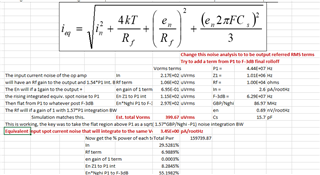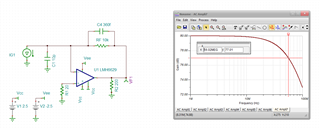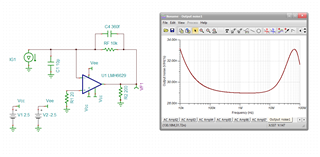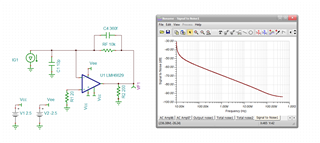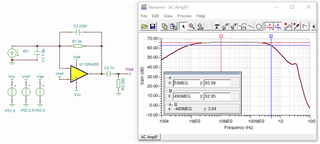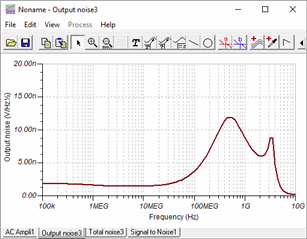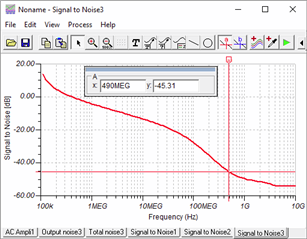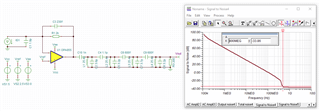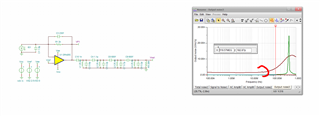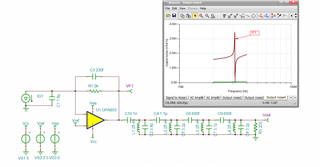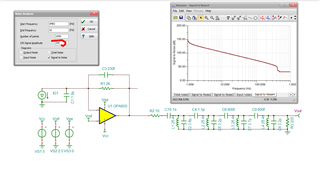Other Parts Discussed in Thread: OPA855
Tool/software:
Hi all
Can someone help me understand the SNR calculation in Table 1 of SNOA942?
The footnote reads: (5) SNR computed as ratio of minimum signal (10nA) to input referred spot noise ini [= 20 * log(10nA / ini) ]
As i see it, ini is a current noise density [pA/RtHz] whereas the 10nA is the minimal photodiode current.
How can you calculate the SNR as a ratio between a current and a current density?


